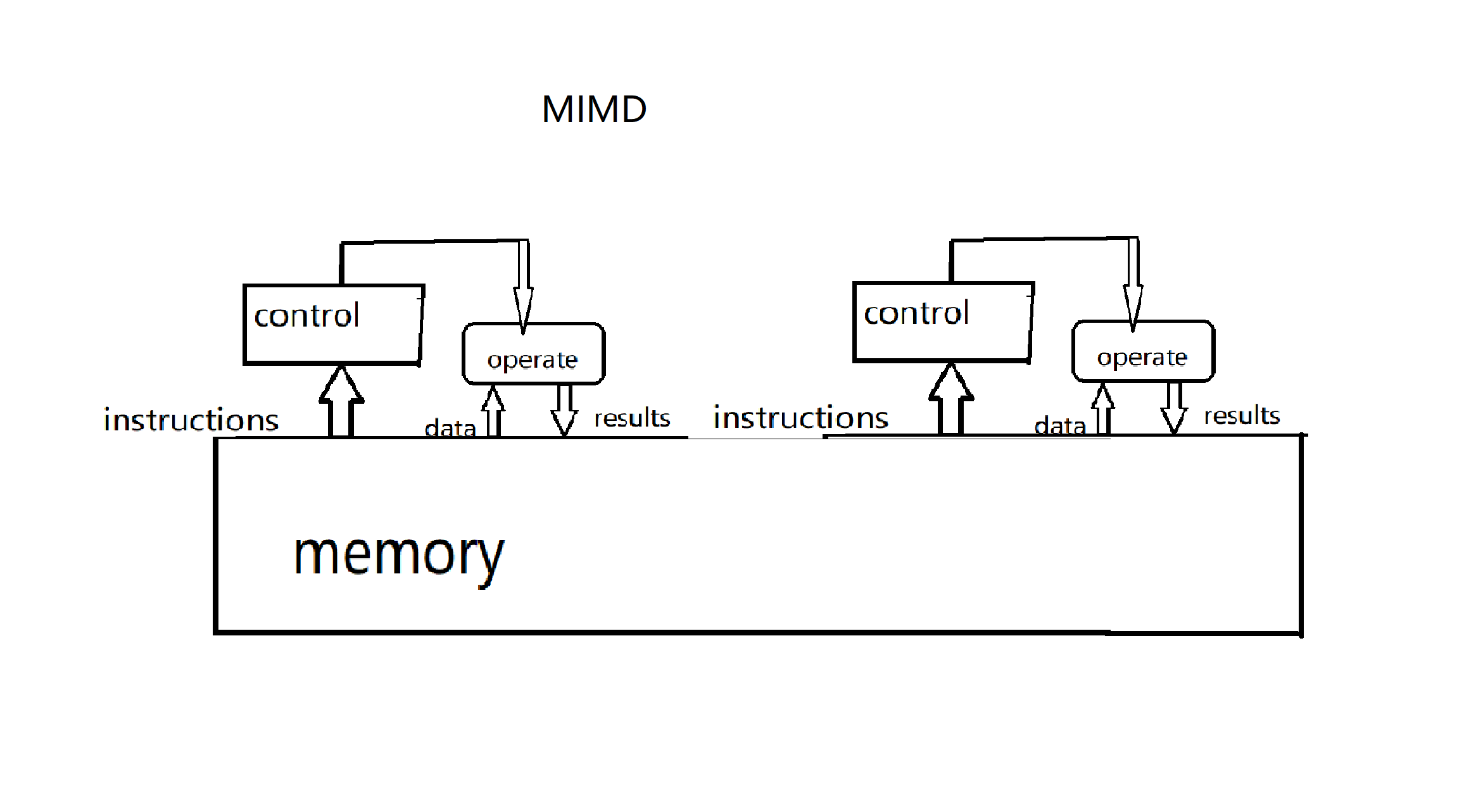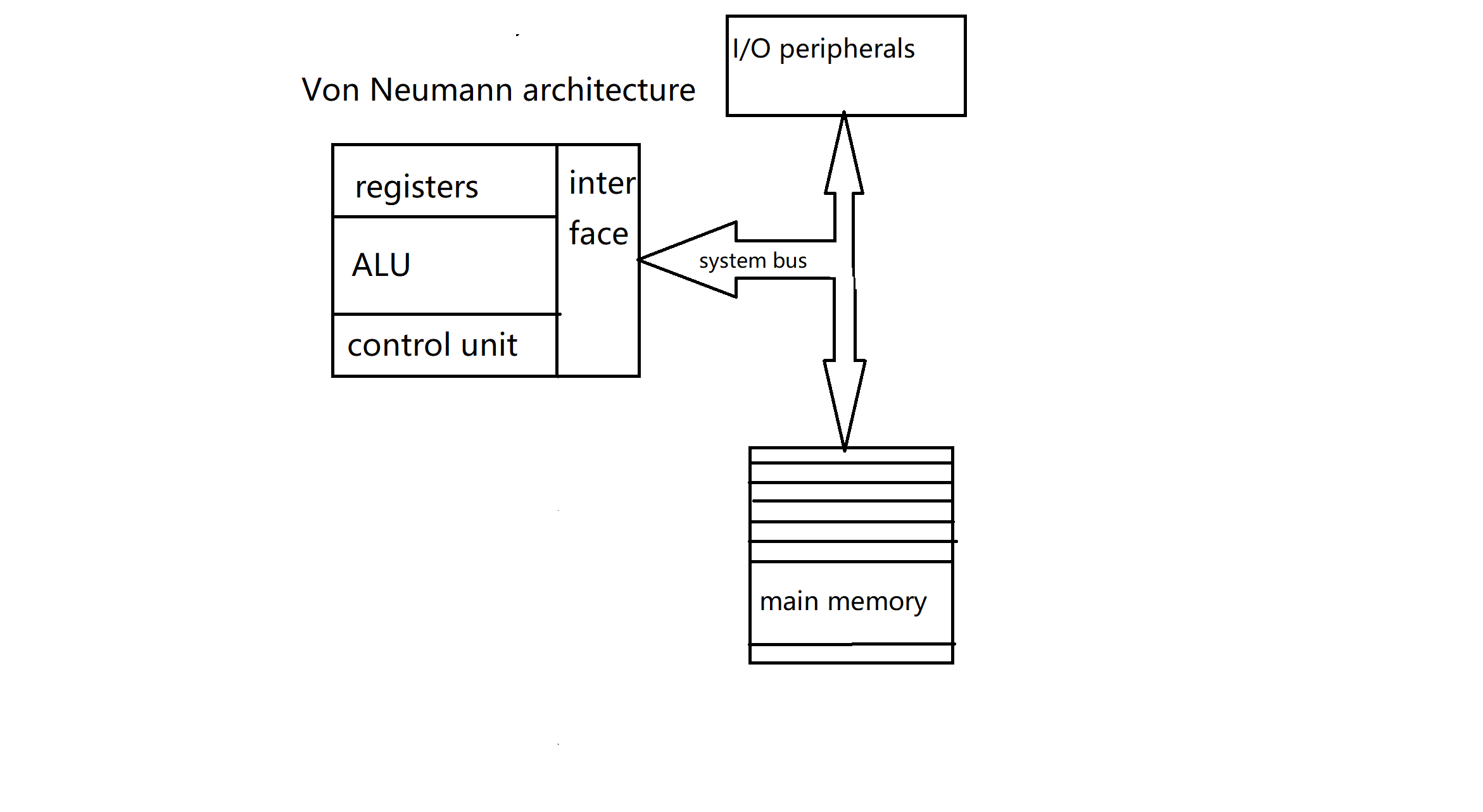
1. CPU (Central Processing Unit): CPU is the most important part in the computer.It consists of registers, ALU (Arithmetic and Logic Unit), control unit, and also interfaces.Its main function is to process instructions and data, so it's like the brain of the whole system.
2.Memory: Memory acts as the repository for programs and data needed for processing.
3. I/O Peripherals:Input and output devices that interact with the computer, facilitating data input/output.
4. System Bus: System buses connect all the functional components, allowing data and instructions to be transferred between CPU, memory, and I/O devices.
1.Von Neumann Architecture: In the Von Neumann architecture, memory is shared for instructions and data, and there's only one path for them to travel, which creates a traffic jam for the CPU. This means the CPU can't do multiple things at once because it fetches instructions or data one after the other. So, it works slower and less efficiently. This problem, called the "Von Neumann bottleneck," holds back the CPU's full power. That's why architects came up with different ways, like Harvard or Modified Harvard setups, to let the CPU handle data and instructions at the same time, making the whole system work better.

2. Harvard Architecture: The Harvard architecture keeps data and programs in different memory spaces, each with its own path for moving information, which can speed things up compared to Von Neumann. However, having two separate memories can lead to a situation where one, like the data memory, fills up while the other, say the instruction memory, still has plenty of room. This uneven usage can cause some challenges because one part might run out of space while the other has plenty left.
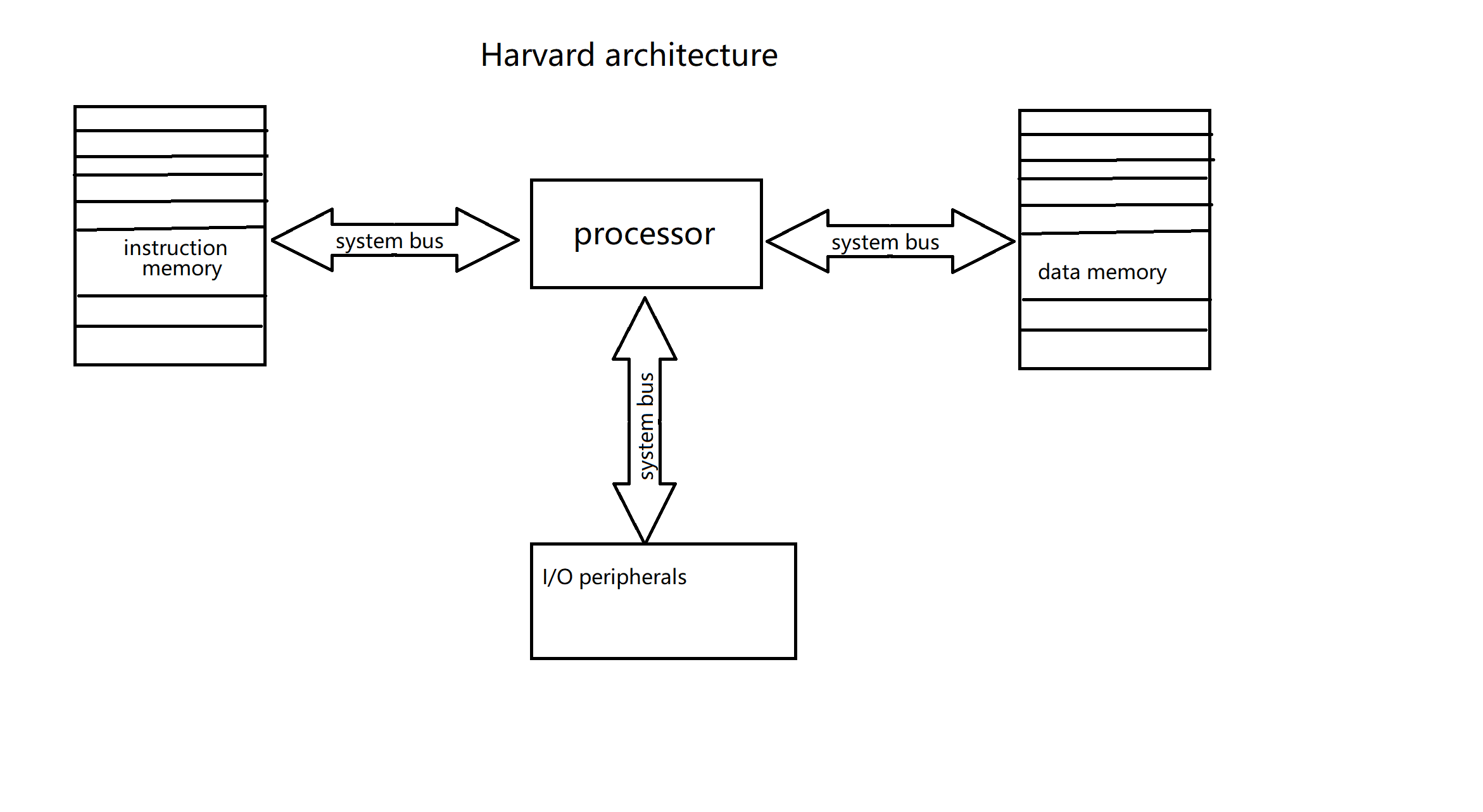
3. modified Harvard Architecture: Therefore, some people upgraded Harvard architecture to modified Harvard architecture. A modified Harvard architecture is more like a mixture of Von Newmann Architecture and Harvard architecture. Its CPU is accompanied by a smaller but faster memory storage called cache. When the processor is executing from the cache, it acts like a pure Harvard architecture, and when it is accessing from the backing memory, it acts as a pure Von Newmann machine. This modification is widely spread in modern processors.
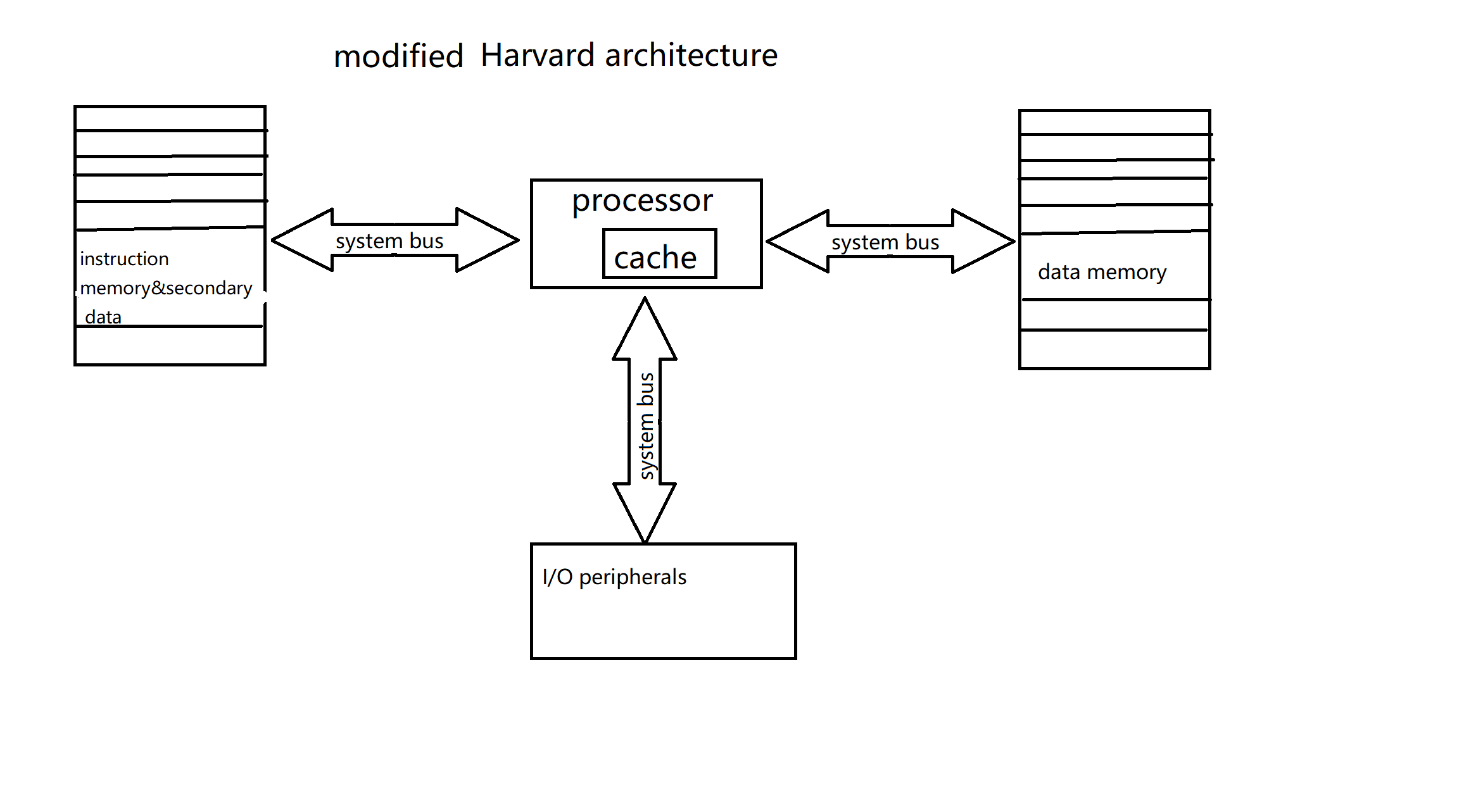
1. SISD (Single Instruction stream, Single Data stream):The Von Newmann architecture belongs to this specific category. SISD computers have one CPU that executes one instruction at a time hence single instruction stream. Also, it fetches and stores one item of data at a time hence single data stream.
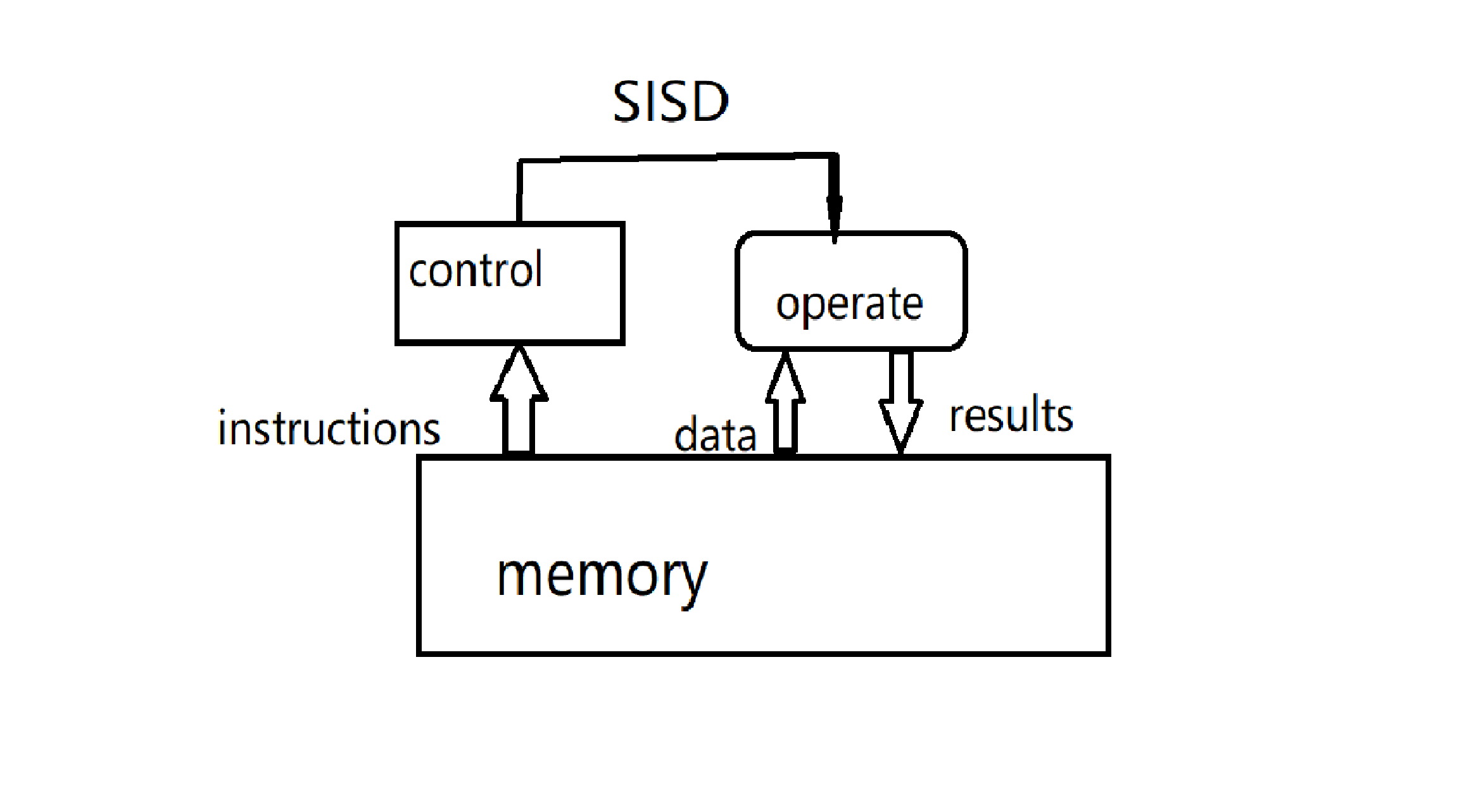
2. SIMD(Single instruction stream multiple data stream): Processor array falls into this category. SIMD machines have a control unit operates like a Von Newmann machine that executes a single instruction stream but they have more than one ALUs. The control unit sends signals to all ALUs so they perform the same execution on different set of data items generally in lock steps.
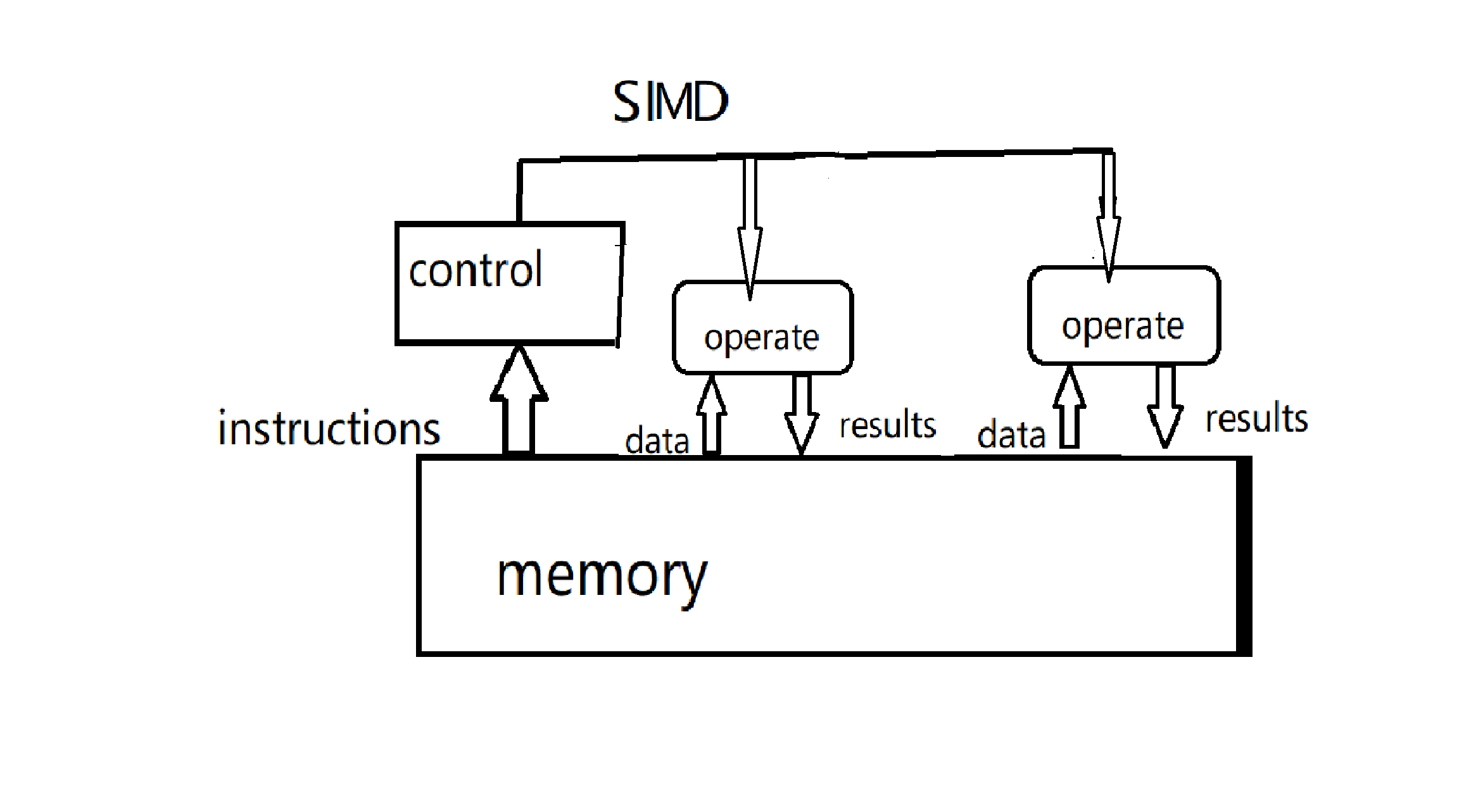
3. MISD (Multiple Instruction streams, Single Data stream):This is like a "what if" situation in computers where people imagine using lots of instructions for just one piece of data. But in real life, this isn't something we usually do with computers.
4. MIMD (Multiple Instruction streams, Multiple Data streams): It is also called multiprocessor. Multiple processors to execute instructions hence multiple instruction streams, also independent data for each processor hence multiple data stream.
